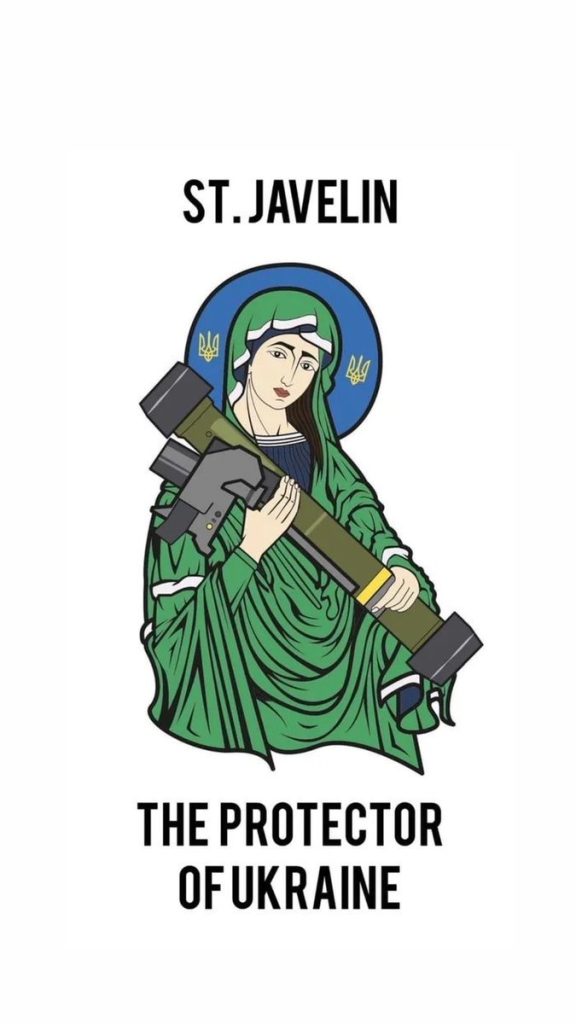
Volodymyr Zelensky Slaps Vladimir Putin

Just another nerd.

Saw this on Twitter. For context,
The United States has given the green light for Baltic nations to rush US-made weapons to Ukraine. The exact amounts and types of weapons were not specified but the Baltic nations’ arsenals include Javelins — portable missiles capable of destroying tanks.
US President Joe Biden’s administration has approved $650 million in weapons to Ukraine since last year, $200 million of it last month amid fears of war.

Alexander Solzhenitsyn died yesterday at the age of 89. Much of the press coverage, obviously, focuses on Solzhenitsyn’s dissection of the Soviet Union. As Cathy Young once put it, “he probably deserves more credit than any other person for stripping away communism’s moral prestige among Western intellectuals.” On a personal note, reading The Gulag Archipelago was like a religious experience to me, and it may indeed be the best work of non-fiction of the 20th century as Time magazine once argued.
But as Young noted in the article I swiped that quote from above, there was a darker side to Solzhenitsyn that is being ignored by all the glowing obituaries and commentary, and that was his anti-Semitism,
Accusations of anti-Semitism are not new for Solzhenitsyn. Critics have long pointed to passages in The Gulag Archipelago that selectively list the Jewish last names of labor camp commandants. And Solzhenitsyn’s historical novel August 1914, published in English in 1972, emphasizes the Jewishness of Dmitry Bogrov, assassin of Russia’s reformist prime minister Pyotr Stolypin.
Solzhenitsyn has claimed that he was merely telling it like it was, but August 1914 embellishes history considerably: While Bogrov was a thoroughly assimilated revolutionary from a family of third-generation converts, Solzhenitsyn saddles him with a Jewish first name, Mordko (a diminutive of Mordecai), and the fictitious motive of trying to undermine the Russian state to help the Jews.
Then came the news that Solzhenitsyn was writing a major history of the Jews in Russia. The first volume of Dvesti let vmeste (Two Hundred Years Together), covering the period from 1795 to 1916, appeared in 2001; the second volume followed in 2003. According to Solzhenitsyn, the work was intended to give an objective and balanced account of Russian-Jewish relations: “I appeal to both sides — the Russians and the Jews — for patient mutual understanding and admission of their own share of sin.” This comment seems suspicious in itself, given that, for most of their history in Russia, Jews were victims of systematic oppression and violence. To talk about mutual guilt is a bit like asking blacks to accept their share of blame for Jim Crow.
Young describes how Western intellectuals tended to ignore or downplay Solzhenitsyn’s anti-Jewish statements, and Christopher Hitchens follows form in his obituary for Solzhenitsyn in Slate. But I think Young was on to something when she concluded her 2004 article thusly,
How to explain this leniency? Perhaps it is simply too painful to consider that the great moral beacon of the communist days might be tainted with bigotry. But while the writer’s role in Soviet-era history undoubtedly deserves respect, that does not require blindness to his flaws.
Solzhenitsyn’s anti-communism, it is increasingly clear, was never a defense of individual freedom. It was a defense of a different kind of collectivism: ethnic, religious, and traditionalist. This is far from the only time that such a mind-set — anti-secular, anti-modern, anti-individualist — has been linked to prejudice against those who don’t fit into the collective.
In July, the Russian Animal Liberation Front Support Group posted on the Internet an English-language outline of the group’s activities in Russia since its first activities in 2000.
The Russian ALF apparently started out with pretty low expectations, bragging, for example, that,
The summer of 2002 was marked by the destruction of 70 advert posters . . .
A few years later they had progressed to stealing frogs,
On 21 April 2004 RALF activists managed to get into the laboratory of the institute named after Anokhin, Russian Medical Academy. They freed 119 frogs and their eggs.
Thank goodness they saved the eggs!
The RALF (their acronym, not mine, but quite apropos) then moved up the food chain to rats and rabbits,
On 8 May 2004, 110 rats and 5 rabbits disappeared from the laboratory of Moscow State University Biological Department. These animals were used in experiments against alcoholism and drugs. Rats were fed drugs and alcohol, and rabbits had electrodes inserted in their heads.
Ah, the globalization of animal rights cluelessness in action.
Source:
History of the Russian Animal Liberation Front…so far. Russian Animal Liberation Front Support Group, July 2, 2004.
The World Bank released a report in September highlighting the increasing rate of HIV infection in Central and Eastern Europe, and warned that if governments there do not do more to deal with the problem, it could turn into a catastrophe for that part of the world.
The World Bank estimates that 1.2 million people in Central and Eastern Europe are currently infected with HIV, and that number is growing by as much as 25 percent annually. About a quarter million people in the region, for example, were infected with HIV in 2002. The total number of people infected with HIV in Central and Eastern Europe is expected to rise to 8 million by the end of the decade.
The World Bank warned that if that infection rate is not curtailed, it could have serious widespread effects. In a press release, the World Bank said,
An uncontrolled HIV/AIDS epidemic could have devastating consequences on health and development in ECA, the report warns. If the HIV epidemic becomes widespread among the working age groups in the region, annual economic growth rates could decline by 0.5 to 1.0 percent. The effects of this drop will be compounded by rising health expenditures, which could increase by 1-3 percent, with substantial impacts on the health budgets of poorer countries in the region. Furthermore, the dependency ratio (the ratio of non-economically active to economically active people) could rise, which would severely strain social protection systems.
Despite such warnings, some country’s in the region aren’t doing much to combat the AIDS epidemic. For example, Russia’s total spending on AIDS is less than 1 percent that of Great Britain, even though Russia has 20 times as many HIV infected individuals than Great Britain. Five hundred people a month die from AIDS-related causes in Russia, with that number projected to increase to as much as 20,000 per month by 2020.
Sources:
Europe’s looming Aids ‘catastrophe’. David Bamford, The BBC, September 16, 2003.
HIV / AIDS Epidemic in the ECA Region. World Bank, September 2003.
Averting AIDS Crises in Europe and Central Asia. Press Release, World Bank, September 16, 2003.
In September, Russia enacted its first restriction on abortion in almost 50 years.
The new law limits the circumstances under which women can have an abortion between the 12th and 22nd week of gestation. Prior the law, there were a wide variety of circumstances under which women could legitimately seek abortions during that period, but now there are only four. According to the BBC they are,
According to official Russian statistics, only about 7 percent of women who have abortions in that country have them between the 12th and 22nd week of pregnancy but some abortion supporters claim that official statistics only record about half the abortions that take place.
Official statistics show a sharp decline in the number of abortions since the collapse of the Soviet Union. From a high of 4.6 million abortions in 1988, the total fell to 1.78 million in 2002.
Abortion supporters in Russia fear that this is simply the first step in policies that will become ever more restrictive of abortions in that country. Russian Family Planning Association director Ingra Grebesheva told the BBC, “The resolution is the first steps toward an attack on the rights of women.”
Some Russian health officials, however, characterize the move as an effort to reduce health problems related to the extraordinarily high rate of abortion that occurred during the Soviet era. A spokesman for the Russian Health Ministry told the Christian Science Monitor,
Artificial termination of pregnancy after week 12 is fraught with grave consequences for a woman’s health. Abortions account for 30 percent of maternal mortality in Russia. It has been decided to reduce these dangers.
Source:
Russia turns spotlight on abortion. The BBC, September 16, 2003
Russia begins to reconsider wide use of abortion. Fred Weir, Christian Science Monitor, August 28, 2003.